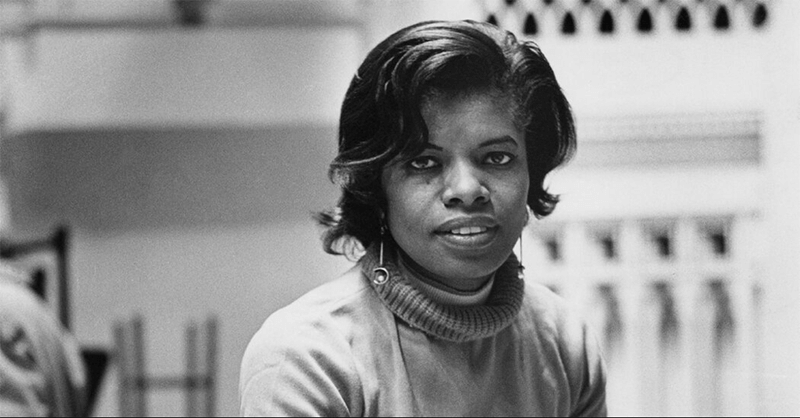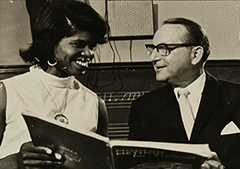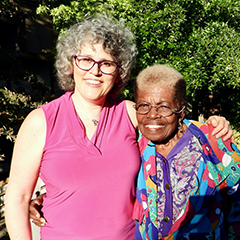In Memoriam: Elayne Jones
By Lauren Vogel Weiss

PAS Hall of Fame member Elayne Jones died at her home in Walnut Creek, California on December 17, 2022 at the age of 94. Her daughter, Cheryl Stanley, told The New York Times the cause of death was dementia.
Over the course of her career, Ms. Jones was Timpanist of the New York City Opera (1949–60), American Symphony Orchestra (1961–72), San Francisco Symphony (1972–75), and San Francisco Opera Orchestra (1975–98). She also dealt with the complications of being a female — and person of color — in a field traditionally dominated by men of European-American origin.
Elayne Viola Jones was born on January 30, 1928 in New York City, New York, the only child of parents who emigrated from Barbados in the West Indies. She began studying piano at the age of six and graduated from the High School of Music & Arts (now the Fiorello H. LaGuardia High School of Music & Art and the Performing Arts) in 1945.
How did she choose percussion? “Racism,” Jones said in a 2019 Percussive Notes interview. “All the piano students also had to play an orchestral instrument. My teacher, Isadore Russ, handed me a pair of drumsticks and said, ‘We all know that Negroes have rhythm.’ It never entered my mind that I would play drums someday.”

Jones continued her musical studies at the Juilliard School of Music, thanks to a scholarship from Duke Ellington. There she studied with Saul Goodman, timpanist of the New York Philharmonic. “I believe he realized that I might have had some of the same difficulties that he had as a short Jewish man because I was a skinny black girl,” she told PN. “I learned so much from him; he was a very creative and innovative person.” Jones graduated from Juilliard in 1949.
She auditioned for the timpani chair of the New York City Opera and, thanks to a recommendation from Goodman, Jones was the first black person to play in an opera orchestra, and was one of only two women in the pit at the time. During her 11 years with NYCO, she toured around the country, dealing with the hardships of having to stay at a different hotel than the other members of the orchestra. It was during this time that she realized she wasn’t just playing music but was making a statement. She would “try to change the way women and blacks were treated.”
After leaving the NYCO, Jones became involved with the newly formed American Symphony Orchestra, under the direction of Leopold Stokowski, an ensemble intended to demystify classical music and make it accessible and affordable to all audiences. She was also involved in the formation of the Symphony of the New World in1965, a training orchestra to give black musicians the opportunity to play orchestral repertoire.
Perhaps one of Jones’ biggest contributions to musical equality was working with several other people (including Benjamin Steinberg, Alfred Brown, and Harry Smyles) at the musicians union to figure out a solution to the problem. They were instrumental in creating the concept of a “blind audition” played behind a screen, so that orchestra committees would not know if the people auditioning were black or white, or male or female, a tradition that continues to this day.
In 1972, Jones auditioned for the timpani chair of the San Francisco Symphony — from behind a screen — and was offered the position by then-conductor Seiji Ozawa. Unfortunately, after two seasons with the symphony, Jones was not given tenure. She sued the symphony for racial discrimination (six other white musicians hired at the same time as her were given tenure, although bassoonist Ryohei Nakagawa was not), playing her third (and last) season with the orchestra while the case went through the court system.
She joined the San Francisco Opera as timpanist in 1975, a position she would hold for the next 23 years. Rick Kvistad, former Principal Percussionist with the SFO who played alongside Jones for almost 20 years, told PN, “I think her greatest contribution to percussion was that she paved the way for women and non-white players in the mostly-white world of classical music.”
Another SFO colleague, percussionist Patti Niemi, recalled their time in the pit together in the same 2019 PN article. “As those were my first six years on the job, there were many times I leaned my head in Elayne’s direction — code for, ‘Where are we?’ Elayne knew the operas as well as the conductors and singers did!”
In 2019, the same year she was inducted into the PAS Hall of Fame, Jones published her 310-page autobiography, Little Lady With a Big Drum (Advanced Publishing LLC). Chapters include memories of her early years, musical education, playing career, and political involvement.
During her nearly 50-year career of music-making, Elayne Jones opened doors and broke down barriers for countless musicians.

Author’s note: I had the honor and privilege of interviewing Elayne Jones in June 2019 for her PAS Hall of Fame article. Hearing her amazing stories was like walking through a living history book. Even then, she had a pair of timpani set up in her living room and was delighted to play for me! As a fellow female percussionist, I could relate to some of her comments about discrimination, but could not even begin to fathom the difficulties she faced simply because of the color of her skin. She brought attention to the topic over the course of her life, hopefully making things better for future generations of musicians, regardless of their sex or race.
Back to In Memoriam









